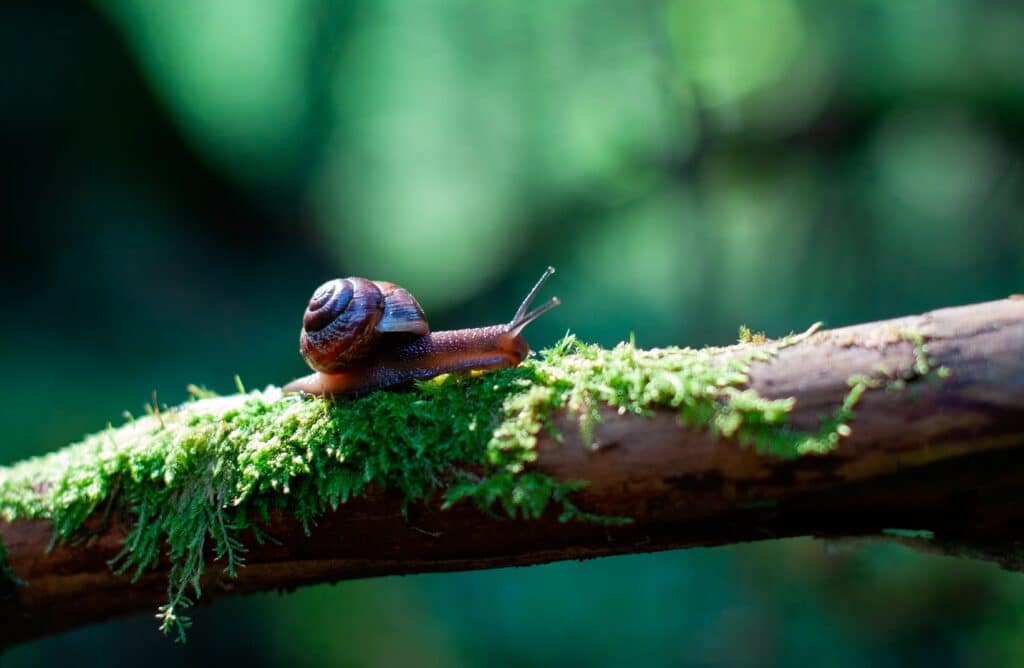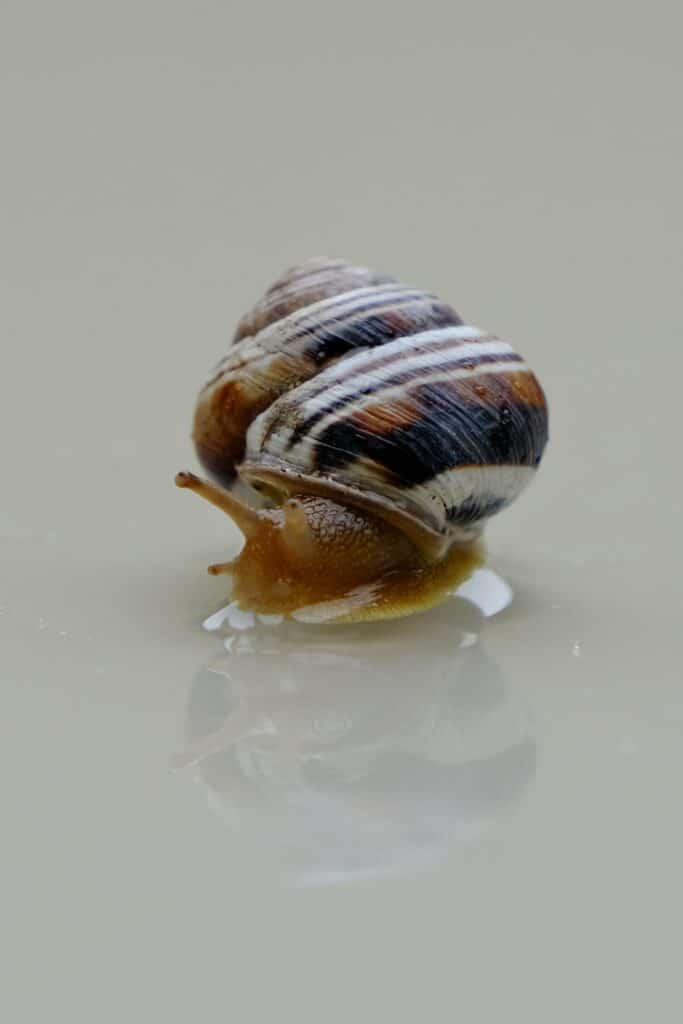Can you remember a land snail character? Inevitably it comes to mind Gary, the curious friend of Sponge Bob, but he is a marine snail.
Land snails have been present in various aspects of human culture, including legends, myths, films, books and graphic works. However, not only fictional snails are important, but also the anonymous ones that are part of the customs and traditions of a region.
One of the clearest examples of the latter is snail racing. Yes, you read well: in some countries, but mainly in the United Kingdom, there is an event each year in which, as if they were horses, people take their land snails and put them to compete in a race, on a circle track. Of course, the one who first reaches the goal wins.
Snail races may lack the relevance of other types of events, but they attract curious people from all over the world, and they have become a unique tradition in some places. One of the most famous is the World Snail Racing Championships, which is organized every year since the 1960s. It could seem that these events are boring or very long, but in reality, the usually slow competitors do not take more than a few minutes to cross the finish line.
To this day, the snail is a symbol of laziness, one of the capital sins of Christianity.
Snails in ancient cultures
In addition to its spiral shell, the slowness of the snail has made it stand out among other animals. These were known to the men of the ancient cultures, who began to attribute symbolisms related to snails. To this day, the snail is a symbol of laziness, one of the capital sins of Christianity.
In fact, the slowness of the snail has made it an animal frequently associated with inactivity, used as part of the metaphorical language. Although it is commonly called “turtle” to someone very slow in some places, in some other areas, also it is called “snail” to a person of slow movements, or that he walks like a “snail.”
On the other hand, the habits of land snails could be indicators of some events. Hesiod, a poet from ancient Greece, recorded that when snails climbed the stems of plants, it was harvest time.
Gastronomy is also part of our culture, and although eating land snails is not a widespread practice around the world, it is not as vilified as the consumption of other animals and has been carried out for several centuries. The ancient Romans made dishes with snails, and even the historian Pliny the Elder mentioned the existence of a farm where the owner raised land snails.
At present, the Giant African Snail (Achatina fulica) is part of some religious ceremonies in Brazil, where is an offering to the deity called Oxalá.
Land Snails in Art
From still life paintings to works of contemporary art, land snails have been present in various artistic disciplines. They had a prominent role in many works of Christian art, where they were considered a symbol of, in addition to laziness, sin, since it is an animal that does not try hard to get food because it eats almost anything organic on the floor. There was the belief also that they had been born from clay.
In the “Annunciation and Nativity,” by Francesco Del Cossa, and in “The Madonna with Child and Saints, by Carlo Crivelli, both Italian painters of the Renaissance, a snail is appreciated. In recent times, L’escargot (The snail), a work of Henri Matisse, stands out as one of the works made with paper clippings of the brilliant artist.
In literature, one of the best known is the snail that appears in “The Adventures of Pinocchio,” by Carlo Collodi, a snail that works for the Blue Fairy. The Spanish poet Felix Maria Samaniego in his fable “The butterfly and the snail” made the latter give a lesson of humility to a beautiful butterfly that despised him, with verses such as:
“If I did not know you,
(Answered the snail) in my conscience
May I tremble in your presence.
But tell me, miserable creature,
You just got out of the trash,
Can you deny that only four days ago you likely
As a humble reptile walk with me,
And I did honor you being your friend? “
One of the most recent films to use land snails is Turbo (2013), an animated film that features a gastropod called Turbo, obsessed with speed, who throws himself into an adventure in his dream to be the fastest. In The Secret Kingdom (Epic, 2013), another animated film, appears a snail called Grub that serves as the caretaker of Queen Tara. It is possible to mention that in the cinematographic version of 1984 of the “Endless Story” of Wolfgang Petersen and the novel of the same name of Michael Ende, a personage mounts a race caracol.
Do you remember more cases of snails in the culture?
The Aztec believed that the snail was the moon god
Besides the fact that the main contribution of snails to the culture of several civilizations is the inclusion in their cuisine, many cultures do not have a good concept about land snails because they are slow. Most people associate that nature with being lazy.
The Aztec believed that the snail was the moon god and the spiral of the shell represented the moon and its cycles. The snail was a symbol of time or transition.
Most of us are familiar with the works of psychologist Carl Jung. He often talked about interpreting thoughts and dreams. The analogy he refers to with snails is that the shell is the conscious thinking process and the soft part of a snail is the unconscious.
References in our language today to snails aren’t in good light. For example saying someone moves as the pace of a snail or that they are as slow as a snail.
Another use is when calling snail mail to sending a letter to the post office that takes days to arrive, instead of an E-Mail which allows us instant access.
Sources:
https://en.wikipedia.org/wiki/Cornu_aspersum
https://en.wikipedia.org/wiki/Helix_pomatia
https://en.wikipedia.org/wiki/Snail
BioExpedition Publishing © 2017.




